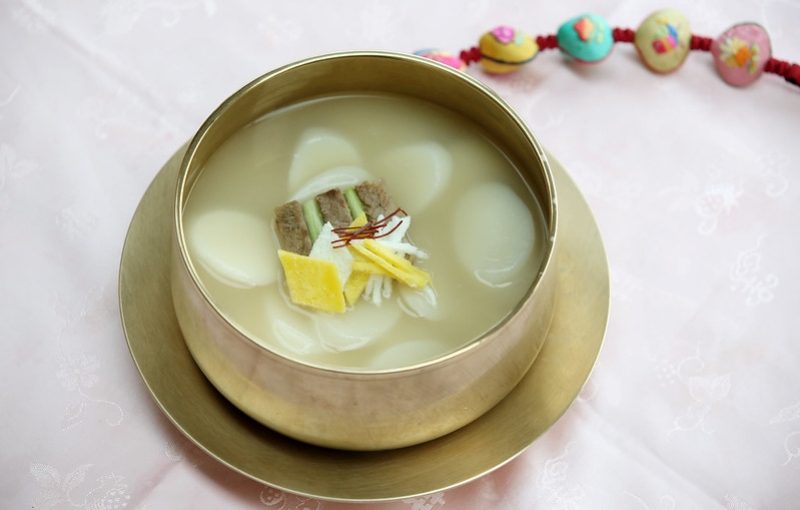
The Cultural Heritage Administration (CHA) on Dec. 18 announced its designation of five leading traditional holidays as National Intangible Cultural Heritage: Seollal (Lunar New Year) and Daeboreum, which marks the year's first full moon under the lunar calendar; Hansik, the 105th day after the winter solstice; Dano, the fifth day of the fifth month of the year under the lunar calendar; Chuseok (Korean Thanksgiving); and Dongji, the 22nd of the nation's 24 traditional solar terms that marks the winter solstice. Shown is tteokguk (rice cake soup), which is traditionally eaten on Seollal. (Korea.net DB)
By Yoo Yeon Gyeong
The Cultural Heritage Administration (CHA) on Dec. 18 in a first for the country announced the designation of five traditional holidays as National Intangible Cultural Heritage.
The five are Seollal (Lunar New Year) and Daeboreum, the day of the year's first full moon under the lunar calendar; Hansik, the 105th day after the winter solstice and an occasion to eat cold food; Dano, the fifth day of the fifth month of the year under the lunar calendar; Chuseok (Korean Thanksgiving) which falls on Aug. 15 under the lunar calendar; and Dongji, the winter solstice.
Seollal and Daeboreum commemorate the beginning of the lunar year from New Year's Day until the first full moon; Hansik features memorial rituals for ancestors such as visiting their graves, trimming weeds around the sites and holding memorial services; Dano has people playing traditional games and observing customs; Chuseok is the day of a full moon on the eighth month of the lunar calendar that marks seasonal customs such as performing ganggangsullae (circle dance) and eating songpyeon (half-moon shaped rice cake); and Dongji is the 22nd of the nation's 24 solar terms featuring the longest night and shortest day of the year.
"Our holiday culture, which was established during the Three Kingdoms period and institutionalized during the Goryeo Dynasty, has the potential for expanding into academic research topics like food, clothing, shelter, rituals, art and cultural symbols as well as comparing holiday cultures around the world," CHA said.
"Unlike its counterparts in China and Japan that use lunar ancestral rituals, Chuseok is a time for ancestor worship and Dongji is for preventing bad luck by sharing red bean porridge and promoting harmony in a family-like community. Given that we can confirm this uniqueness and representativeness of our holidays, we deemed the five worthy of designation as National Intangible Cultural Heritage."
It added, "In today's world where individualism is accelerating, we expect this to contribute to the recovery of family and regional community values and the spread of holiday values."
dusrud21@korea.kr